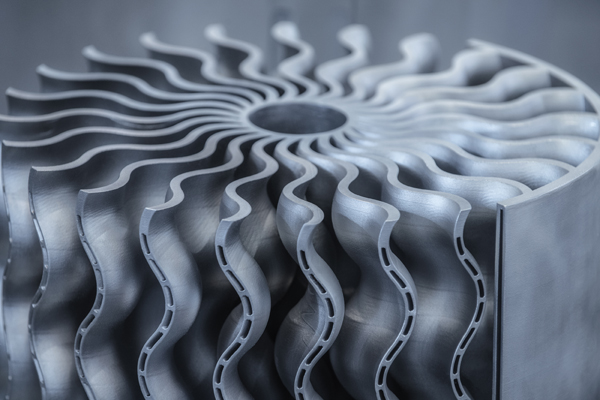Towards Transformation

Where will additive manufacturing go in the next 10 years? Stephanie Hendrixson and Pete Zelinski offer six ideas in the latest episode of the AM Radio podcast.
When stereolithography was invented more than 30 years ago, would anyone have guessed that 3D printing technology would explode, expand, and come to change the way that production parts are made? Likely not. While some of the issues around additive manufacturing (AM) have remained the same, the techniques, materials, and applications have grown exponentially. And we predict that this growth will continue, though perhaps in different directions than it has thus far.

In the most recent edition of the AM Radio podcast, I challenged co-host and AM Editor-in-Chief Peter Zelinski to come up with some predictions about where AM is headed over the next 10 years. We each shared three ideas, summarized below.
As humans become more accustomed to generative designed and topology optimized forms, the door will open to increasingly complex, asymmetric, and optimized objects, whether they be aerospace brackets, automotive engine components, or consumer products.
Six predictions for additive manufacturing’s next 10 years:
1. Service parts will lead to a re-engineering of the entire product lifecycle. 3D printing has great potential as a source of aftermarket and spare parts, but only if 3D printable files exist for those parts. In the future, we will rely less on 3D scanning and reverse engineering because those digital files will exist from the beginning, and be created as part of the product’s initial development.
2. Increasingly irregular and organic designs. There is some extent to which today’s designers and engineers hold back on using additive manufacturing to its full geometric capability, simply because the consumers and users of 3D printed items must feel a sense of trust and recognition of these objects. As humans become more accustomed to generative designed and topology optimized forms, the door will open to increasingly complex, asymmetric, and optimized objects, whether they be aerospace brackets, automotive engine components, or consumer products.
3. The arrival of a new category of machine shop that specializes in metal AM parts. Additively manufactured parts are unlike the stock, blanks or even castings most machine shops are accustomed to handling. A new class of machine shops staffed and equipped to fixture, locate, machine and inspect the often irregular parts possible through 3D printing is on the horizon.
4. More intentional material usage enabled by AM. 3D printing allows for material conservation by encouraging the use of material only where it is necessary, but it also increasingly supports the use of gradients and the joining of different materials. These capabilities will challenge the notion that one part should be made of a single material and enable more innovative designs and better conservation of high-value materials. Expanding options for sustainable materials from bio-based or recycled sources will also support this material intentionality.
5. Inventors as a new category of manufacturers. There is a hard line today between product development and manufacturing, where design and ideation must stop to enable production through injection moulding, machining, or some other conventional method. Not so with additive manufacturing; without tooling, the design of the product can continue to change even as the item goes into production — and the inventor can continue to be involved, even to be the manufacturer through 3D printing.
6. New kinds of 3D printing that we have not yet imagined. The past year alone has revealed a handful of unexpected means of constructing parts layer by layer; there's no telling what the next ten might add to the available options. 3D printing methods that today are only in development, only the seed of an idea or perhaps not even in existence at all could prove to be the next important advance in AM’s next decade.

STEPHANIE HENDRIXSON
Executive Editor
Additive Manufacturing




 Facebook
Facebook.png) Twitter
Twitter Linkedin
Linkedin Subscribe
Subscribe